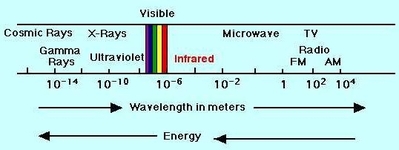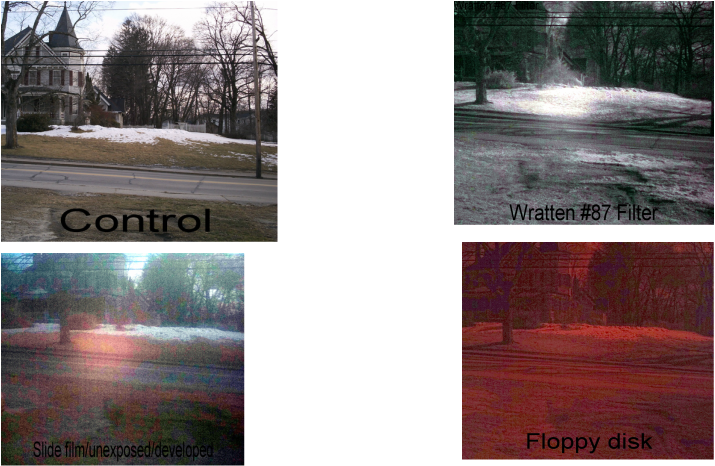
The type of infrared we will be using is in the near IR, between about 700 and 1000 nanometers. This is from the red end of the spectrum to areas in the infrared that digital photo-sensors respond to well. (It is also possible to use B & W film cameras, but that is really a specialized area and not covered here). The photo-sensors in most modern digital cameras are either CCD, (charged coupled devices), or CMOS, (complimentary metal oxide semiconductors). So, lets begin with the camera and see if it can be used easily in this application.
Most good, (read expensive), cameras are somewhat limited in their ability to be easily converted for these simple experiments. The good cameras have either a coating or a filter over the photo detector to stop IR. This is due to the fact that incoming IR can cause problems with the auto-focusing mechanism. Also, IR can cause unwanted bright spots or "digital fog". So, the first order of business is to determine whether or not the selected camera will work. This can be tested with any TV remote which sends IR signals to the TV. Simply point the remote at your camera and look in the LCD screen. You should see a blue spot when any button on the remote is pressed. If the dot is very weak or not visible, then you have an IR filter in place. If the spot is bright, then you are ready to proceed. I have a Canon that had a filter and I started to take it apart to remove it but found it daunting. My hands are too big and the parts too small! But, there is a good alternative. Most point and shoot cameras are not filtered, so are good candidates. So are webcams which are also fun to experiment with. I had an old Polaroid a530 that worked well so that it what I used for this post.
A few words about the filter used in front of the lens are in order. On many sites, I have seen the filter referred to as an IR filter for IR photographs. This is not the case at all. The filter is a visible light filter. It is designed to filter out some or all visible light and pass IR. The three that I will show are: a true visible light filter, the #87 Wratten glass filter, slide film that was unexposed and processed, and floppy disk material. The slide film came from the end of a processed roll from years ago, and yes, they still sell floppy disks. But hopefully, like me you have some hanging around gathering dust. I took the photos in the same location with worst case scenario conditions. Overcast and low IR, and cold, are not ideal at all but demonstrate the possibilities.

 RSS Feed
RSS Feed
